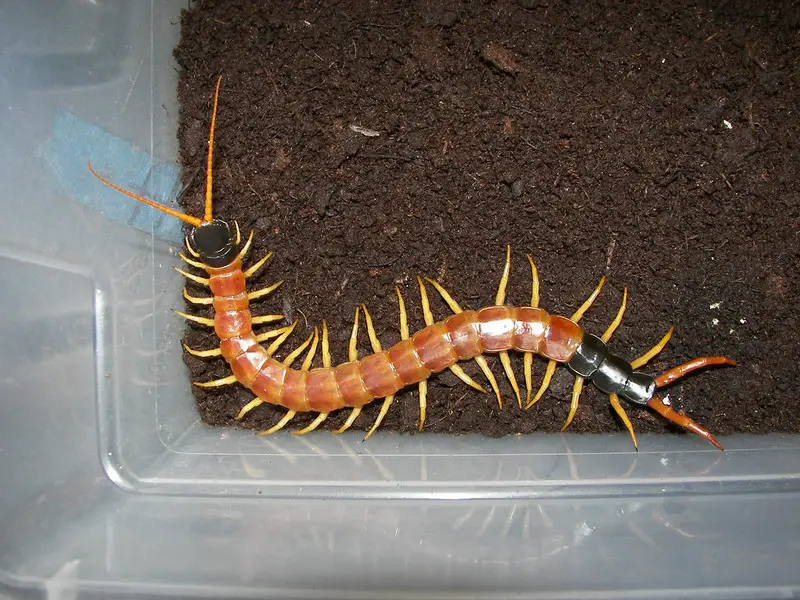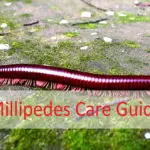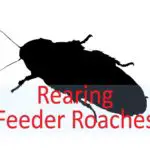If you are interested in keeping a giant centipede as a pet but don’t know how, you are at the right place. This guide will tell you all you need to know about giant centipedes care.
To keep a giant centipede as pet, house it in a ventilated container with 3 inches of peat moss, potting mix and coir mixture. Keep the substrates moist. Feed the centipede with 2-3 crickets once a week. Avoid handling centipedes bare hand because they are venomous.
That’s pretty straightforward isn’t it? Let’s continue with more details so that you can take care of your giant centipede better.
What is Giant Centipede?
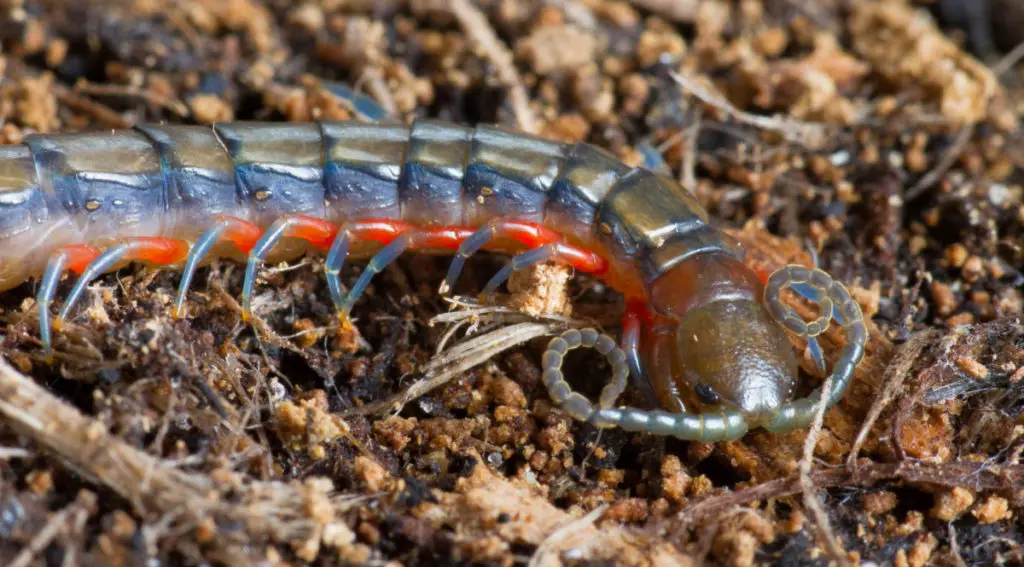
Giant centipede is a collective name for a group of large centipedes. The largest among them is the Scolopendra gigantea, also known by the common name Peruvian giant centipede or Amazonian giant centipede.
S. gigantea can be found in tropical South America. They grow up to 14” in length. You might think they are sluggish with such sizes, but the fact is they can move very fast.
The first pair of centipede legs are modified into venomous fangs called the toxicognath or forcipules. They use the venoms in their fangs to paralyze their prey. Coupled with their strength and agility, giant centipedes can easily prey on a variety of small animals including insects, tarantulas, mice, frogs, birds, snakes and bats.
Which Giant Centipede to Keep?
Other than S. gigantea, there are other “smaller” giant centipedes from different regions. I’ve listed some of the giant centipedes in the table below for comparison.
| Scientific Name | Common Name | Found in | Length | Lifespan | Remarks |
|---|---|---|---|---|---|
| S. gigantea | Peruvian/Amazonian giant centipede | South America | 13” | 10 years | The largest centipedes. Note they are not found in Peru unlike what their common name implies. There are at least 3 morphs with different leg colors. |
| S. heros | Giant redheaded centipede | Southwestern US | 8” | 6 years | Desert species with conspicuous redhead |
| S. subspinipes | Vietnamese/ Chinese giant centipede | Asia and Hawaii | 8” | 10 years | Tropical species with various subspecies. Coloration is rather distinct between different subspecies, and many have been reclassified as unique species. The subspecies mutilans can be kept together in a group |
| S. dehaani | Vietnam giant centipede | Southeast Asia | 8” | 6 years | Tropical species commonly kept in Asia. Used to be a subspecies of S. subspinipes. |
| Alipes multicostis | Cameroon Flagtail | Africa | 5” | 7 years | Red or flame-like color body |
| S. polymorpha | Tiger centipede | Southwestern US | 7” | 7 years | Desert species with black stripes on the body. Multiple morphs with different colors |
| S. morsitans | Tanzanian blue ringleg/Red-headed centipede | Southern Africa, Southern Asia, Pacific and Caribbean | 6” | 10 years | It has bluish legs. Both its head and tip of its body are red. |
| Ethmostigmus trigonopodus | African giant centipede | Africa | 8” | 7 years | Body with blue sheen. The true-blue variant can grow up to 8” |
It is not possible to legally import exotic centipedes without going through lengthy and tedious processes. Fortunately, you can get captive-bred centipedes from many experienced hobbyists from social media platforms and Google Search.
As a beginner, you should consider starting with S. polymorpha, A. multicostis, or E. trigonopodus. Those centipede species are considered beginner-friendly because they are more hardy while less venomous than other species.
Enclosure
To house the centipede, you need an enclosure with a width and length of at least 2 – 3 times the length of your centipede. The height should be at least the length of your centipede. Don’t use a shallow enclosure because the centipede can easily escape when you open the lid.
The enclosure must have a secure lid to prevent the centipede from escaping. The centipede is strong and it can push the lid open if it is not secured! You definitely don’t want a giant centipede roaming freely in your home. If available, get those with a smaller, separate opening that allows you to put in the feeder.
Choose a transparent enclosure so that you can see your centipede. You will appreciate the visibility whenever you need to open the enclosure lid. The enclosure should also have as many vents as possible to ensure adequate ventilation.
Acrylic housing can be a good option because it is transparent, cheap, and has a lot of vents. However, most commercially available acrylic housings come in pieces that need to be assembled. The joints are usually not secured enough and you might accidentally release the beast! Unless the acrylic housing comes in 1 piece, the best option is still a glass enclosure.
As a general rule of thumb, never house more than 1 centipede in the enclosure because they will harm each other.
Substrates
Mix pesticide-free and unfertilized potting mix, peat moss and coir in a 1 to 1 ratio. Add water to the substrates and mix thoroughly. The substrates should be moist enough to hold its shape momentarily when pressed with your hands without dripping water. For desert species such as S. heros, you can keep the substrate moisture slightly lower.
The substrates in your enclosure should be at least 3 inches in depth. Replace the substrates once every quarter.
Water
Water is very important for the centipedes, even if it is a desert species. Always keep a water dish in the enclosure. Put in some rocks so that the feeder insects can save themselves if they fall into the water dish.
Fill up the water dish whenever it dries and mist the enclosure from time to time.
Temperature
Most centipedes don’t require additional temperature control. Keep them at room temperature and they will survive well. The same applies to both desert and tropical species.
If it is too cold in the winter, use a small heat mat to keep your centipedes warm. Fix the heat mat on one of the walls or underneath a corner of the enclosure. This will create a temperature gradient for the centipedes to move to the most suitable spot they prefer.
Lighting
Centipedes are nocturnal creatures, which means they are active at night. Hence, lighting is not required. Place the enclosure away from direct light.
For observation, you can use red LED light if available. Otherwise, white light will do. Just make sure you turn off the light after observing your centipede.
Feeding the Centipede
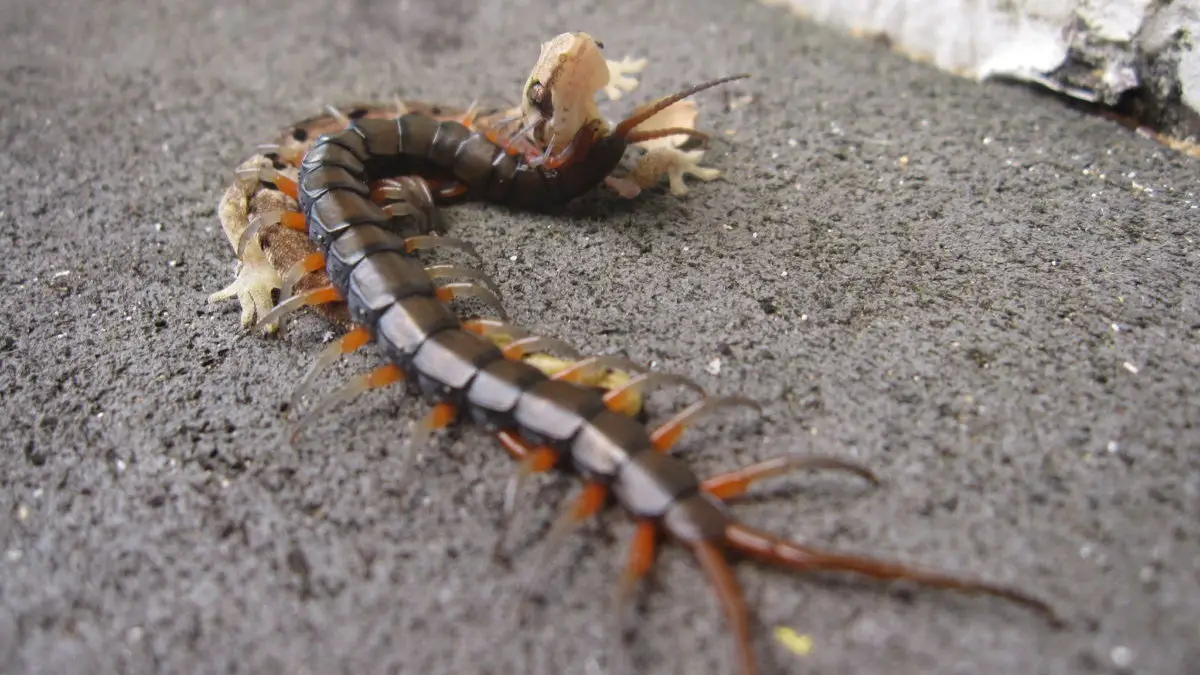
Centipedes are carnivores. Any animals smaller than the centipedes can be their food.
Hobbyists commonly feed their centipedes with crickets, roaches, or mealworms. Some people might even feed their centipedes with a mouse, although that is unnecessary. You can even offer geckos to your centipede if you manage to catch one.
Feed your centipede once a week. Try giving them 2-3 crickets. The feeder insects should be less than 1/3 the size of the centipede. You don’t want your centipede to become the prey instead. Adjust the amount of food depending on the centipede’s appetite.
It is OK if the centipede does not eat the feeder insect immediately. Unless you feel that your centipede may become the prey, you can just leave the feeder there for a few days.
If you want to watch the centipede hunting, you can offer it food at night since they are more active at that time.
Centipedes are messy eaters. Often, you will see broken legs or wings of the feeder insects in the enclosure. Try to remove them with a pair of tweezers if you can, to keep the enclosure clean.
Molting
Centipedes grow by molting several times until they turn into adults. In each molt, the centipede sheds off its exoskeleton and grows a new one.
Prior to molting, the centipede will stop moving and stop feeding. If you see your centipedes not moving, likely it is molting. Do not touch or disturb them because they are very fragile at this stage. The molting process can take up to a week or more.
Don’t feed your centipede or introduce any feeder insects if you think it is molting. Resume the feeding regime 1 week after the centipede molted. This is because it takes time for the newly formed exoskeleton to harden before it can protect the centipede.
Handling Centipedes
I bet you must have seen photos or videos of people holding giant centipedes on their hands, or letting the centipede crawl on them. Please, DO NOT do that!
Centipedes are dangerous to begin with. They can get agitated easily and strike with their venomous fangs. While it is rare, centipede venom can cause death or serious medical complications. Even without the venom, the bite itself is extremely painful!
If you get bitten, wash and disinfect your wound. Cover the wound with band aid. Don’t apply vinegar or whatever grandma remedy. If you experience nausea, irregular heartbeat or other serious complications, immediately consult a doctor.
Whenever you need to handle the centipede, use a pair of long tweezers with rubber tips. The length of tweezers keeps you safe while the rubber pads keep your centipede safe.
Male versus Female Centipedes
The most difficult part about breeding the centipedes is differentiating male and female centipedes. There is no easy way to do it.
To determine the sex of your centipede, immobilize it by asphyxiation using CO2. Then, press the last segment of the centipede to expose its genital for examination.
Some people may drown their centipedes in water instead, which seems to work well as the centipede would recover most of the time.
You can use a camera with good macro capability to capture some photos for examination later. This allows you to quickly put the centipede back into its enclosure before it wakes up.
With the photos and the correct species name, you can get help from educated hobbyists to sex your centipede.
Here’s a link to a file with some photos of male and female genitals of different centipede species that might be useful for you (I don’t own the file). It also teaches how to immobilize your centipede safely.
Please bear in mind there is a risk of hurting or killing your centipede if you “over” asphyxiate or drown it for too long. On the other hand, there is also a risk of hurting yourself if the centipede wakes up too fast. I’d strongly advise against sexing centipedes unless you are confident, well-prepared and willing to take the risk.
Breeding Centipedes
Breeding centipedes is difficult even if you have successfully sexed the centipedes. You will need adult centipedes and there is no easy way to know whether they are adults or juveniles. Most of the time you will have to rely on guessing. Eg. If your centipede has reached the theoretical adult age or if it is close to the maximum length, it might be an adult.
If you really want to breed centipedes, the easiest way is to get S. subspinipes mutilans. This species can live together in the same container.
As long as you have multiple S. s. mutilans of similar sizes housed together and some luck (at least one of them is of opposite sex), they will mate sooner or later. And since they are communal, the newborns can be housed together. You just need to make sure you give them enough food of suitable sizes.
For centipede species that live individually, if you have the right pair of centipedes (adult of opposite sex, of the same species), they will mate when housed together. If not, they will likely attack each other.
Introduce the male centipede into the female housing. Do this at night under dimmed or red light. Make sure they are well-fed a day before. You should see the 2 centipedes interacting. Prepare to intervene (using tweezers) if they start to attack each other.
If everything is right, the male centipede will spin a web to deposit his spermatophore, a capsule containing his sperms. The female will then move to the web and position her genital above the spermatophore to pick it up. Quickly remove the male centipede as he has completed his task.
Gravid centipedes may not lay eggs immediately. It may take a few months or before she starts laying eggs. Once the eggs hatch and the juvenile centipedes can move around, separate and house them in individual containers.
Recommended Supplies
Here’s what I recommend you to get for your giant centipedes. Note that I get a small commission when you buy the items through the links in this page. This helps me to maintain the site without incurring additional costs to you.
Final Words
I hope this guide is useful and gave you an idea on how to keep your centipedes. There are too many things to cover for a single blog post. I highly recommend you to get the book by Orin Mcmonigle (affiliate link: Amazon | AbeBooks) to learn more. It covers everything from the biology, identification, care and breeding. At the moment, there is no other centipede books that are as comprehensive and updated as this one.

